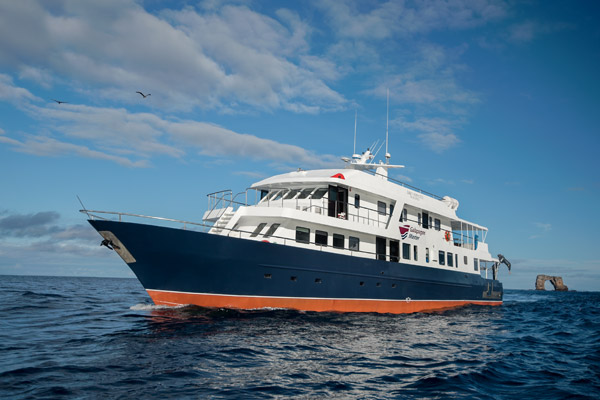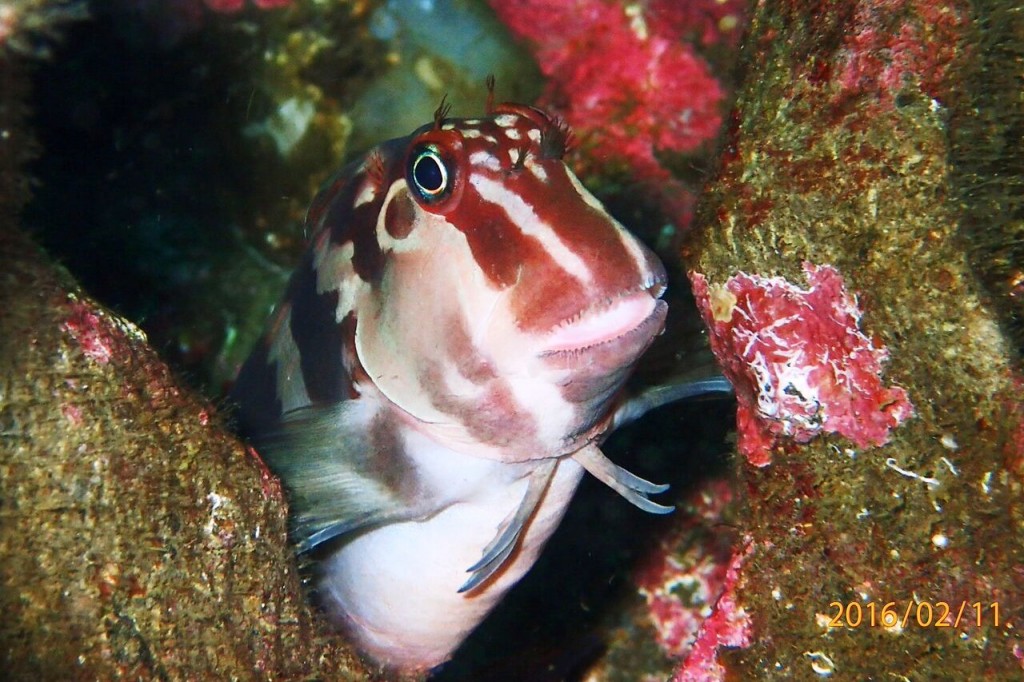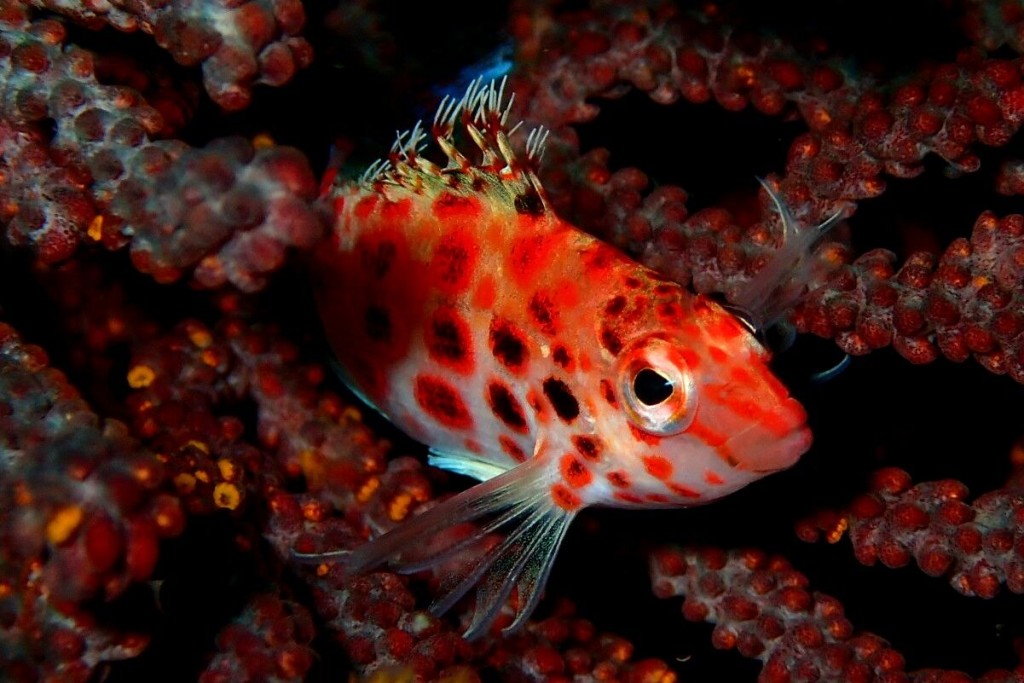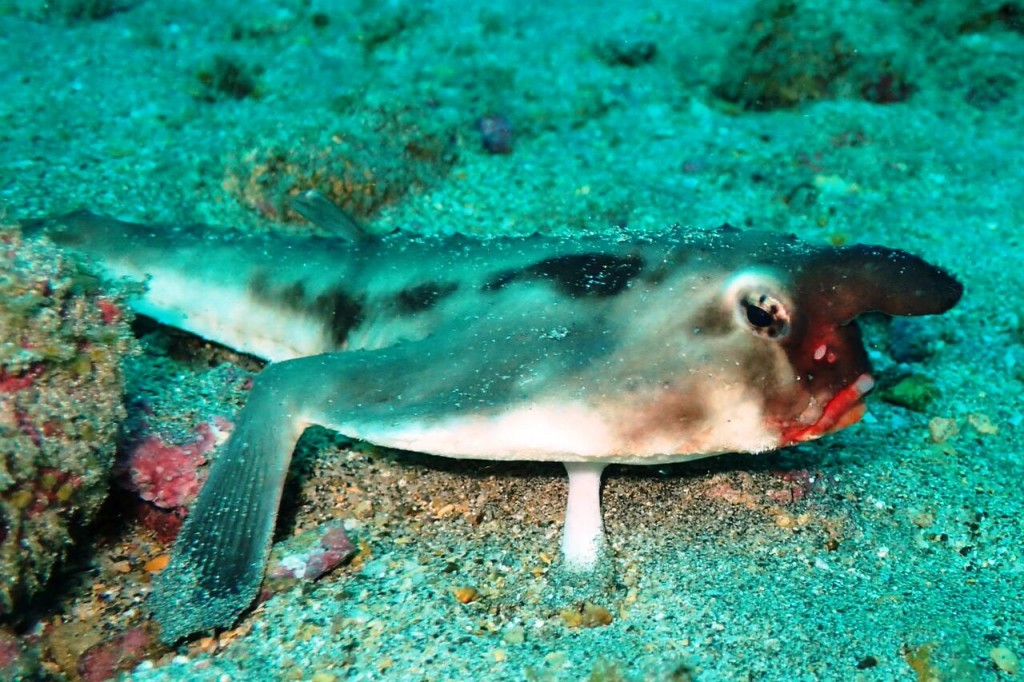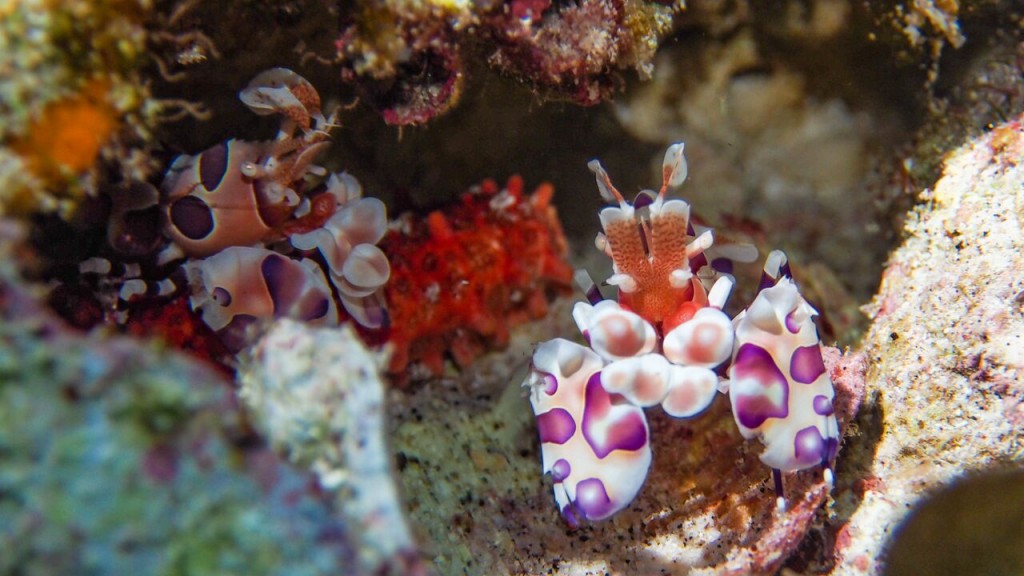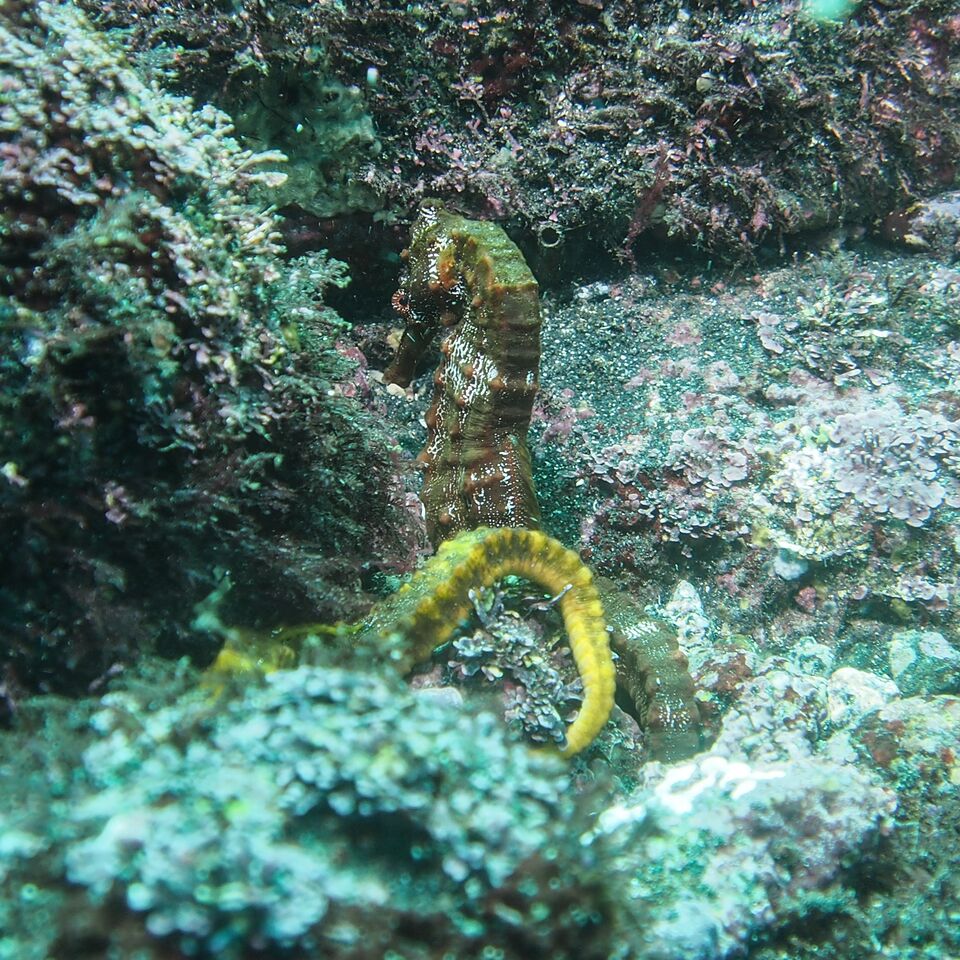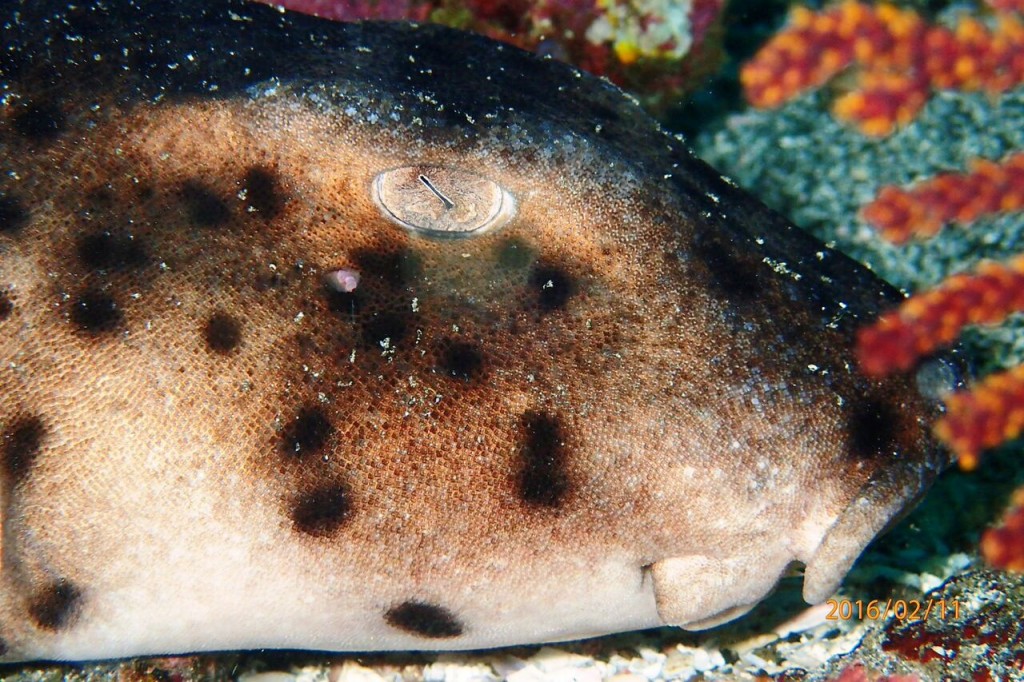News
All Creatures Great and Small in the Galapagos
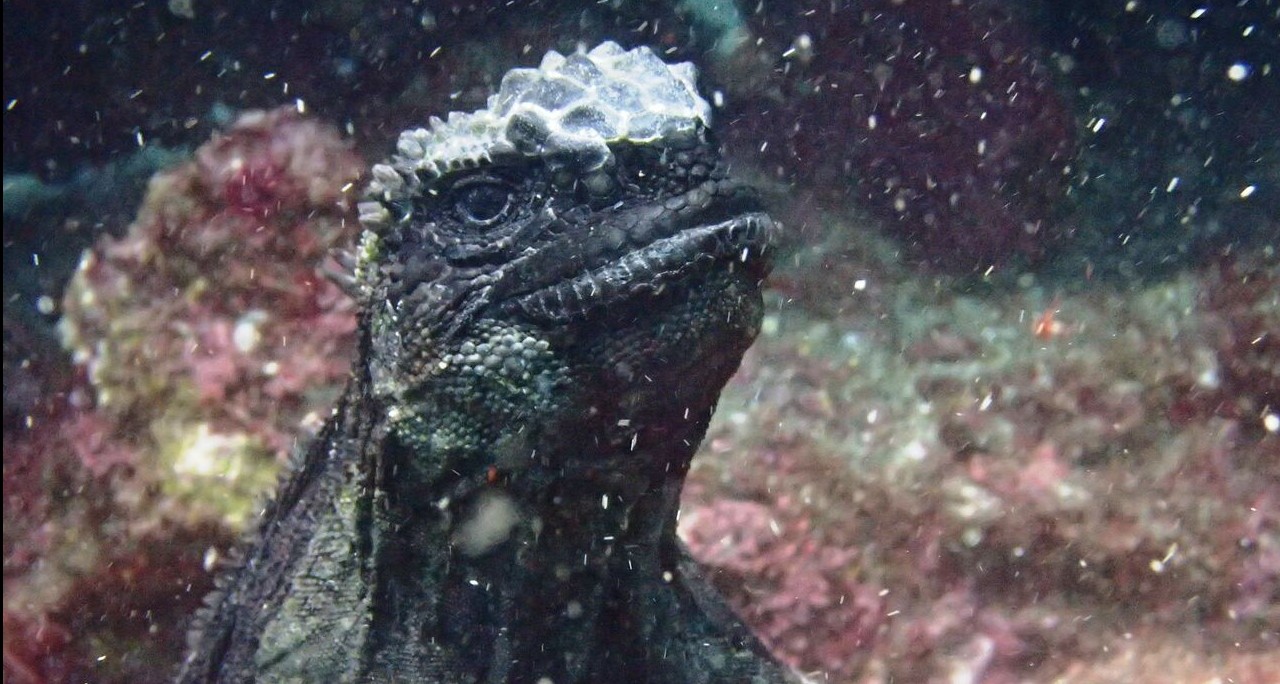
“Macro Photography” and “the Galapagos” are not two phrases you would commonly hear in the same sentence. The majority of divers and underwater photographers travel to the Galapagos Islands for the abundance of hammerhead sharks and other large pelagic fish species. With the focus of attention on the wealth of life out in the blue, there is a tendency to overlook the smaller creatures, but on a recent trip aboard the Galapagos Master I decided to put my new TG4 camera to the test and do a bit of critter hunting.
Before you all start hollering in disbelief, I of course had my time gazing in awe as schools of hammerheads came in to be cleaned by the king angelfish. I, like the rest of our dive group, excitedly snapped away as a whale shark cruised by us at Wolf Island and diving with Mola Mola at Punta Vicente Roca was a dream come true. Yet in between all that action there was a good deal of waiting around holding onto the rocks, so it was easy to spend some time checking out the cute blennies or marveling at the curious hawkfish.
Like most dive sites, if you look hard enough at the reef or rock wall there will always be something of interest to photograph. At Darwin and Wolf islands the blennies were happy to pose and an easy, fascinating distraction whilst waiting for more hammerheads. My favourites were the large banded blennies, due to their gaping mouths and attractive cirri, but also the ability to photograph them in different settings.
Along the reefs wall of Cabo Douglas and Isabella Island amidst black coral bushes and seafans there were dozens of Long-nosed and Falco hawkfish. Now anyone who has ever tried to take a photo of the long-nosed variety will know they are tricky little critters who like to hop and hover about, flitting off just as you got the focus set. But not so with the ones seen in the Galapagos. Perhaps they were unused to divers and flash photography but they seemed happy enough to hang about and pose for me. I experienced the same action again at Cousin’s Rock where 3 of the Falco variety happily stayed in place, turning occasionally to give me a different angle – how very obliging!
Possibly the most odd looking fish to be found during the trip, the Red-lipped batfish is a flattened pancake shaped fish with protruding “lips”, beady eyes and pectoral fins adapted into walking appendages. We found our first ones at Wolf Island, resting down on the sandy seabed at 27-32m. These fish can be approached by divers but you need to be cautious as they can swim pretty fast and tend to head directly to deeper water. Positioning ourselves between the deep and the batfish the photographers among us were able to get some cracking shots. We also discovered that we had seen the lesser known Rosy-lipped batfish too. These can be identified by the small white hairs under their chins! Another one was found at Cabo Douglas too.
Red rock crabs could be found scurrying over the rocks at almost every dive site and were easy to photograph both in and out of the water. But it was during our batfish hunting dive that I managed to spot a tiny shrimp exhibiting symbiosis with its seastar host – admittedly my photo is pretty bad but i was happy to find it in any case. Though the most surprising find was whilst drifting over the sandy reef at Darwin’s Arch. Our guide, JC, spotted two Harlequin shrimp busy tackling their seastar meal. This was totally unexpected; I’ve only seen a few harlies in the Philippines so was in no way anticipating finding any in the Galapagos. I think JC was as surprised as we were!
I read about the possibility of seahorses on the Galapagos Master itinerary, so upon arrival at Cabo Douglas we asked about the opportunity to look for these critters. The majority of us have seen seahorses of many varieties but for one of our group it was a first time experience. We found 2 curled around a coral frond in the shallow water. These pacific seahorses are far larger than their Indo-Pacific cousins and gigantic when compared to the miniscule pygmy seahorses of Raja Ampat.
Aside from these fascinating tiny critters we were able to closely approach both turtles and the Galapagos horn shark for a bit of eye candy, we found numerous lobsters and scorpionfish and it was relatively easy to get up close with the marine iguanas as they were feeding on the algaes. The shallow water with surge and low visibility made photographing them a challenge but certainly everything was possible. The anemones at Punta Vicente Roca also provided colourful macro subjects.
There are so many interesting creatures to see and photograph in the Galapagos Islands that no dive, even if lacking the big fish action, will ever be dull. Consider bringing a macro lens with you and dedicating at least 1 dive to a bit of critter spotting.
Susie took a 10-night trip aboard the Galapagos Master Liveaboard, departing from San Cristobal Island.
Gear News
Introducing the TR-80, IR-50 and CS-30 Regulators from DYNAMICNORD

Whether you are a beginner or a professional diver – with the three new main regulators from DYNAMICNORD, everyone will find their favourite regulator. They all look super stylish.
Excellent performance with the TR-80
Quality and performance are the be-all and end-all for regulators. It is not for nothing that the TR stands for Tec Reg. The innovative design of the TR-80 guarantees absolute reliability – even in ice-cold waters.

Perfect breathing effort at 0.8 J/l / certified for diving in waters below 10 degrees / structural design made of solid brass for best cold protection / membrane-compensated design with dry seal of the first stage / reduced exhalation effort thanks to optimized exhalation membrane and bubble deflector / adjustable Venturi (dive/predive) and adjustment knob for individual inhalation comfort / innovative design of the front cover prevents free-flow in strong currents or when diving with scooters / design made of sandblasted brass, matt chrome finish / 2 HP and 4 LP outlets / mouthpiece made of high-quality, anti-allergic silicone for maximum comfort.


Amazing underwater adventures with the IR-50
The IR-50 is the top regulator for advanced and experienced divers. Natural breathing is the essence of this regulator.

Ideal breathing effort at 0.8 J/l /certified for diving in waters below 10 degrees / compensated membrane / adjustable venturi (dive/predive) and adjustment knob for individual inhalation comfort/ outlet valve and deflector for minimum exhalation effort and reduction of bubbles on the face / design made of sandblasted brass, matt chrome finish / 2 HP and 4 NP outlets / mouthpiece made of high-quality, anti-allergic silicone for maximum comfort.


The Workhorse – our CS-30
For diving centres and diving beginners – the workhorse stands for strong construction, reliability and robustness. Perfect for your training.

Optimal breathing effort at 0.8 J/l /recommended for diving in waters above 10 degrees / non-compensated piston / adjustable venturi (dive/predive) / outlet valve and deflector for minimum exhalation effort and reduction of bubbles on the face / design made of sandblasted brass, matt chrome finish / 1 HP and 3 NP outlets / mouthpiece made of high-quality, anti-allergic silicone for maximum comfort.


Octopus OP-30
The OP-30 is the ideal addition to all DYNAMICNORD regulators. It is identical in construction to the CS-30.

The TR-80, IR-50, CS-30 (DIN & INT) regulators and the Octopus OP-30 are available from DYNAMICNORD dealers and in the online store.
DYNAMICNORD – Your Outdoor Companion.
Marine Life & Conservation
Paul Watson Released as Denmark Blocks Japan’s Extradition Bid

Renowned anti-whaling activist Paul Watson has been released from custody in Greenland after spending five months in detention. Denmark’s Justice Ministry rejected Japan’s request for his extradition, citing insufficient guarantees that his time already served in custody would be credited against any potential sentence.
The 74-year-old Canadian-American was arrested on July 21 in Nuuk, Greenland’s capital, when his ship docked to refuel. His arrest was based on a 2012 Japanese warrant related to a 2010 encounter in Antarctic waters. Japan alleged Watson obstructed operations and caused damage to a whaling research ship during efforts to disrupt illegal whaling. Watson has consistently denied these claims, maintaining his commitment to marine conservation.
Denmark, which oversees extradition matters for Greenland, concluded that while the legal conditions for extradition were met, the lack of assurances from Japan regarding time-served credit made extradition untenable.
In a video shared by his foundation, Watson expressed gratitude and relief, saying, “After five months, it’s good to be out… and good to know they’re not sending me to Japan.” He added that the most difficult part of his time in custody was being separated from his two young sons.
Watson is a pioneering figure in marine conservation, known for founding the Captain Paul Watson Foundation in 2022 after decades of activism with the Sea Shepherd Conservation Society. His bold efforts to defend marine life have earned him widespread support, including from celebrities and conservationists. His work has also been featured in the acclaimed reality TV series Whale Wars.
Watson’s lawyer, Jonas Christoffersen, praised the decision, stating, “We are happy and relieved that Paul Watson is now free.” He added that Watson is eager to reunite with his family and continue his vital work.
The arrest occurred while Watson’s vessel, the M/Y John Paul DeJoria, was en route to the North Pacific with a team of 26 volunteers to intercept a Japanese whaling ship. His foundation described the arrest as politically motivated and emphasized that Watson’s actions were focused on ending illegal whaling practices.
Japan resumed commercial whaling in 2019 after leaving the International Whaling Commission, asserting that whale meat is a cultural tradition. Conservationists, however, continue to challenge these practices, highlighting their impact on marine ecosystems.
Despite the challenges, Watson remains steadfast in his mission to protect marine life and bring attention to whaling practices. His dedication to ocean conservation has made him a globally respected advocate for the environment.
-

 News2 months ago
News2 months agoIconic SS United States to become the World’s Largest Artificial Reef
-

 News3 months ago
News3 months agoBook Review – 52 Assignments: Underwater Photography
-

 Gear News3 months ago
Gear News3 months agoDYNAMICNORD – New German diving brand enters the British market
-

 News3 months ago
News3 months agoExploring Cenote El Pit: A Diver’s Dream
-

 Gear News3 months ago
Gear News3 months agoTry BARE drysuits (and maybe even win one!) this Friday with Sea & Sea at North West Dive Fest
-

 Marine Life & Conservation3 months ago
Marine Life & Conservation3 months agoBook Review: Coral Triangle Cameos
-

 Blogs2 months ago
Blogs2 months agoDive the Egyptian Red Sea this Autumn with Regaldive
-

 News3 months ago
News3 months ago2024 Ocean Art Underwater Photo Competition Announced


